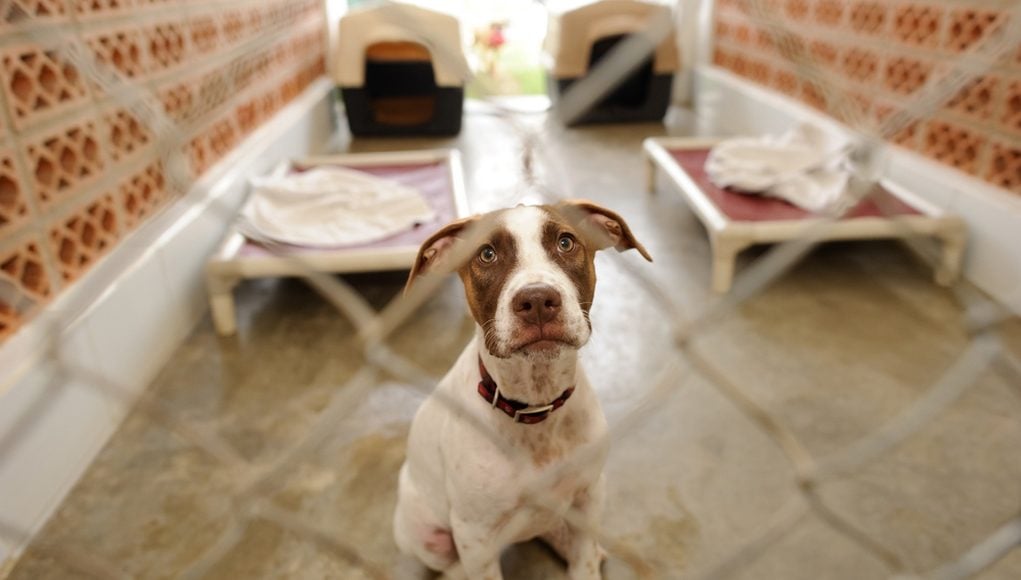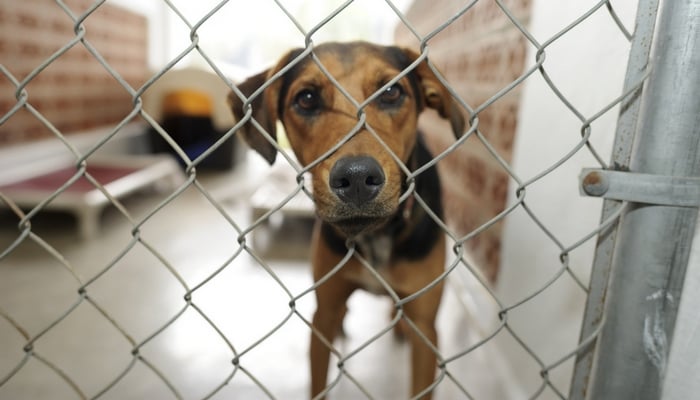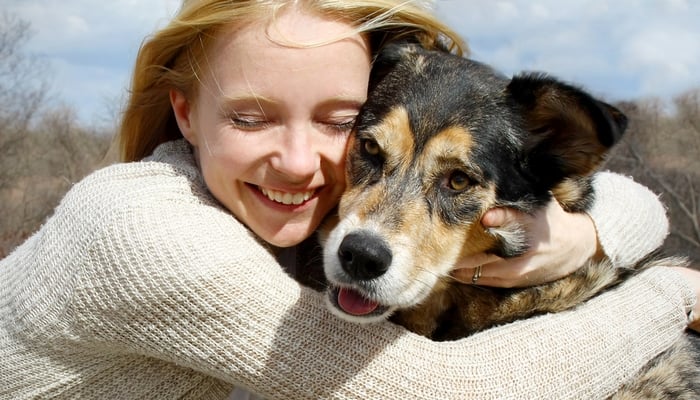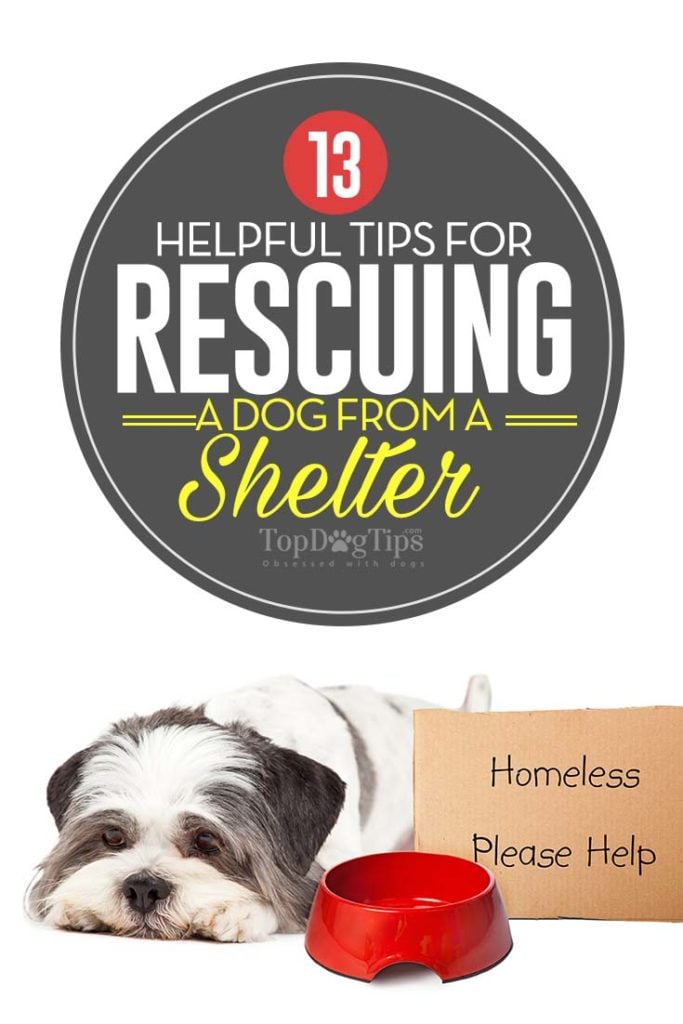While there are many advantages to adopting a dog from a shelter (vs buying from a breeder or pet store), it's not always that simple, and many things could go wrong.
Why Adopt a Dog from a Shelter Instead of Buying?
Aside from discouraging the proliferation of puppy mills (shops that sell puppies for profit, not the welfare of a dog), there are several more reasons why adoption is better.
First, it is more cost-effective for you to adopt a shelter dog. Buying a dog from a store or breeder, even if it's a reputable breeder, means extra vet bills and health expenses (e.g. puppy shots) which can be costly. Shelter dogs are up-to-date on vaccinations, are spayed/neutered and their underlying health problems have been addressed.
Some dogs in shelters are already house-trained. While it may take them a week or so to get used to a new environment (i.e. your house), you will save time and energy by adopting a dog that already knows manners, and won't need to housetrain them.
Dogs adopted from shelters can be healthier. Studies show that puppy mill dogs (and store bought pets) are often sicker or have behavioral issues. Shelter dogs will be well-taken care of by shelter's veterinarian before they are lined up for adoption, so if there are any health conditions you should know about, the shelter will inform you.
Adopting a pet dog offers an emotional benefit. Due to the number of abandoned pets in the USA, some organizations are forced to euthanize. You'll b saving an innocent animal's life from death, and that will have sense of fulfillment, instead of spending money to buy one that’s in no danger at all, and most pet owners agree with that.
There are more reasons to adopt a dog instead of buying them, some of them ethical. However, even if you choose adoption, it's crucial to be prepared – and here's how.
13 Tips for Rescuing a Dog From a Shelter
1 Assess Your Dog Adoption Needs
You must have a clear reason (other than saving a life) why you wish to adopt a dog. Answer some of the more important questions for yourself and your family (or whoever is living with you) before adopting a rescue dog. For example, are you adopting a dog to:
- Because you want a loyal companion?
- Entertain a child?
- Guard your house?
- Help a disabled family member?
- Any other reason?
These will help you narrow down the choice of your next pet, where to find them, and whether you should adopt a dog at all. Many of these questions reveal crucial factors to consider and should also help you determine as to the size and breed to adopt. This is important because every breed has their skill set, and not all dogs are good with children, for example, or make for ideal watch dogs guarding homes.
Dogs are also a chore to take care of at times and may be expensive to maintain. Consider the initial maintenance costs as well as lifetime costs of keeping the dog so you don't abandon them later. Do you know how much your dog will cost you every year? Are you going to be able to afford this additional expense?
Consider how much space you have in your household. Is there enough room for the breed you want? For example, if you're considering adopting a large breed or an active breed, you'll need more space both indoors and outdoors. If you live in an apartment in a large city, a small quiet breed that doesn't bark would be a much better fit.
2 Talk to a Pet Counselor Before Adopting
Most animal rescue organizations and animal shelters have what they call “pet counselors. These professionals are well-versed in pet adoption and can help you choose the right dog and breed. Inform the counselor about your requirements.
Who are pet counselors? They are simply experts in all things “dog.” They're already aware of potential issues future adopters face and will inform you beforehand. They will gauge your requirements and help you accordingly, depending on what you have in mind. Don't just rely on dog breed adoption surveys to pick the best pet for you.
In my case, the counselor was nice enough to tell me the lovely Cane Corso I’d seen first wasn’t the best choice when it comes to my kids at home. Instead, they said I needed a more family friendly canine that won't cause additional problems in my home, and I have change my mind based on their advice (but I still adopted a new dog!)
3 Prepare Your Questions for the Animal Shelter
Animal shelters want to find the best home for their dogs, so they will ask you tons of questions beforehand – there's a huge list of those for you to prepare to answer. But you also shouldn't be shy; ask them your own questions as well.
Below are some of the questions we recommend asking the shelter you're adopting from.
“How did the dog ended up in the shelter?” This may help you understand your future pet's behavioral or special health needs.
“Are there any medical issues to consider?” Veterinary bills may inflate your budget significantly, so make sure you're prepared for what's to come.
“Is the dog showing any signs of stress or behavior issues?” Dogs may show symptoms of longing, depression and stress. Such pets, for instance, would not be good to in a home where the owners were gone for long periods of time each day.
Prepare your questions in advance, write them down so you don't forget, and make sure to go through the whole list. It's better to ask in advance than seek answers later.
4 Meet Different Kinds of Dogs in the Shelter
When you'll walk into the animal shelter and go “browsing” through all the dogs there that want a new home, you'll likely to fall in love with the first few you see (first impressions matter!) But we recommend to keep at it, and don't stop until you've seen and communicated a little bit with every single dog in the shelter.
Don’t be too hasty and pick out the first dog that is offered to you, as appealing as the pooch may turn out to be. You may not connect with the dog well after the first impression, which will end up in abandonment of the said dog. Instead, once you've gone through all the different animals that the shelter has to offer, and discussed them with the staff, then and only then should you make your final choice.
5 Prepare a Home for Your Pet
Having a dog isn’t always going to be easy, and you may need to make a few changes here and there around your house. This is both for the safety of your home and for the safety of your newly adopted pup.
For instance, get your pet a dog bed and some of the essentials (discussed below), and be ready to clean up after your pooch. Depending on the situation, you may also need to puppy-proof your home if you're adopting a curious dog that likes to chew. If you’re a new owner, getting used to it may take a while.
This has to be done before you adopt a dog. Regardless of what pet you choose, puppy- or dog-proofing your home will usually be the same type of procedure, so you might as well do it in advance to prevent accidents in the first few days after bringing a dog.
6 Learn About Dog Adoption Requirements
As noted above, you're likely to be asked questions by the shelter. Some of those may be regarding your mental and physical well-being, income or daily schedule (or that of your family members) to ensure you can take care of your new pet.
Don't take this personally. The shelter needs to be sure that you're going to be able to care for the dog that you adopt and give them the time and attention a dog needs.
Ensure that you meet dog adoption requirements. The most common regulations you're likely to encounter are:
- At least 21 years old
- You must own your house or have written permission from a landlord
- Vet reference to ensure that your new dog will have proper health care
- The motive is dog adoption and not as a gift to others
Consider anything else that you may think might impact whether you're allowed to adopt a dog from a particular shelter or not, and if possible, fix any potential issues.
7 Visit Your Nearest Dog Shelter Facility First
There are many great rescues and plenty of dog adoption websites of different rescue centers all around, with photos and descriptions of many cute and sad looking puppies that are waiting to be brought into their own home. But it's not recommended to opt for this.
You must not rely on images only that you've seen online, or the descriptions of the dog's behavior or health condition only, and make a decision that way. It's very likely that it's not going to turn out well for either of you.
First of all, most of those descriptions and photos aren't always recent. Second, as noted above, you need to see the dog (and the staff) in person, and see how well both of you jive. So visit your local animal shelter(s), inspect the facility to make sure that it is a legitimate organization and the animals are well cared for. Then, make your choice.
8 Assess Your Choices
At this point, you have narrowed down your choices for adult dog, senior dog or puppy adoption. Now, it is time to assess the pet, especially if the animal shelter has few ideas about the pet’s background and behavior. Below are a few tips regarding what to look for.
- Reaction to other people
- Reaction to surroundings
- Barking, stance, and other dog behaviors
These are just a few pointers, but come up with your own indications what makes an appropriate rescue for you to adopt, and whether you'll live in peace together.
9 (Maybe) Listen to Your Instincts
While some of you may balk (or bark) at the idea, we do suggest that you rely on your gut instinct as well, at least sometimes.
It’s hard to explain it, and it's not the most science-based approach to adopting a dog, but perhaps fate draws you to a certain dog and not another. Even if it's a senior preloved dog, if you're drawn to that animal as much as the animal is drawn to you, then it may be your next best friend.
If you feel a special attraction towards a dog, or just get a general negative vibe about it, go with that feeling. Alternatively, try to pay more special attention to that case at the very least, because for whatever reason, gut instincts oftentimes do work.
10 Don't Judge a Rescue Dog by Their Bark
This is a very important point that most future dog owners do not consider and simply fall for judging a dog by his bark. Samantha has conducted a great podcast interview with a long-time professional trainer and avid sled dog rescuer on this very subject.
Do remember that shelter dogs may bark at you when you inspect them. I was informed that they were simply reacting to the other dogs, and not being hostile. These dogs are in a new environment with new animals and new people coming in daily. You can't always judge a dog based on his behavior in an animal shelter environment.
11 Enlist the Help of a Professional Dog Trainer
When you're not sure about something, and if you can afford it, a professional dog expert, in particular an experienced dog trainer, can be your greatest asset if you want to adopt a dog that's going to fit you, your lifestyle and will listen to what you're saying.
I highly recommend to seek the help of a dog trainer to ensure your new pet companion can respond to at least the basic commands (sit, stay, come, fetch, etc). These aren't only handy, but are essential – every house dog must learn them for everyone's safety.
12 Purchase the Necessary Dog Supplies
If you are completely sure you will bring an adopted dog home, there are a few items that are necessary before you finally head over to the shelter. We've already talked about getting the basic stuff like a dog bed, but here are a few dog supplies most dogs need to have around the house.
Make sure that you have:
- Dog food bowls for meals and water
- A reliable dog leash and collar (carry them along with you to the shelter)
- A few basic dog grooming supplies
- A few good dog toys
- High quality dog foods
- Some healthy dog treats
- Dog ID tag in case the shelter doesn’t have one
- (Optional) A pet gate for dogs
Some of these are optional while others are absolutely essential for any dog owner to have in order to ensure health and safety of their pets.
13 Fill Out the Application
Now it's finally time to fill out the application form for adopting a puppy or adult dog from the animal shelter of your choice, and provide them with all the necessary paperwork.
Remember to include all relevant details, as these things matter on the approval of your dog adoption. You might be asked to provide proof of home ownership, maybe even proof of income, a letter from your veterinarian, documentation of your work schedule.
Occasionally, some dog rescue organizations are particularly clingy to details and may ask for even more details. If you've confirmed that the organization is legit, then there should be no problems with giving them all the information. See my list above, too.
RELATED: 26 Step Checklist for Adopting A New Dog or Puppy
Tips for a Smooth Transition with a Rescue Dog
After you've successfully adopted your new puppy, adult dog or senior pet, it's not over yet – you need to ensure that the dog will have a pleasant experience and a smooth transition into your (and now his or hers) new home.
Here are some personal experience-based essential tips when it comes to bringing home a new dog that you've adopted from an animal shelter:
Expect the unexpected on the dog’s first day at home. Not all dogs are shy, so your newly adopted pup may cause some major disruptions to your normal family life.
Prepare for the period of adjustments for the dog and your family. Discuss this with all the members of your family and be sure that you're all on the same page as far as the dog's daily routine, training and who will be caring for the new pet.
Ensure your dog is well trained with regards to responding to commands. In especially applies to training, routines and commands when called, walking on a leash or harness, potty behavior and socializing with humans and other dogs. If he's not ready, you need to start this training as soon as you bring him home.
Stay patient with your dog. Give your newly adopted puppy some reasonable amount of time to adjust to the new environment and the rules of the house.
Supervise him well. Your dog will likely be curious about the new place, and will go around sniffing and adventuring. Make sure you observe him from the distance.
Prioritize dog training basics. Teach your dog good in-home manners from day one; correct immediately if he shows any canine behavioral problems.
Ensure safety and security of your new pet. Along with other tips above, always keep your dog's ID tag attached and secure it well, at least for the first months.
Having a dog around your home can help brighten things a lot, besides helping kids (and even adults) to be responsible. It is a lot of work and will require a lot of effort initially. Dog care isn't always easy. Remember that despite the good times, there will always be bad times. Be patient with your pooch, and give him enough time to adjust and learn.
In conclusion, please note that as in my personal case, a representative from the animal shelter may drop by once in a while to check on the dog. If they determine you can’t take care of him, they will probably take him back very quickly.
READ NEXT: 48 Ways To Save Money on Dog Grooming, Training and Supplies

















